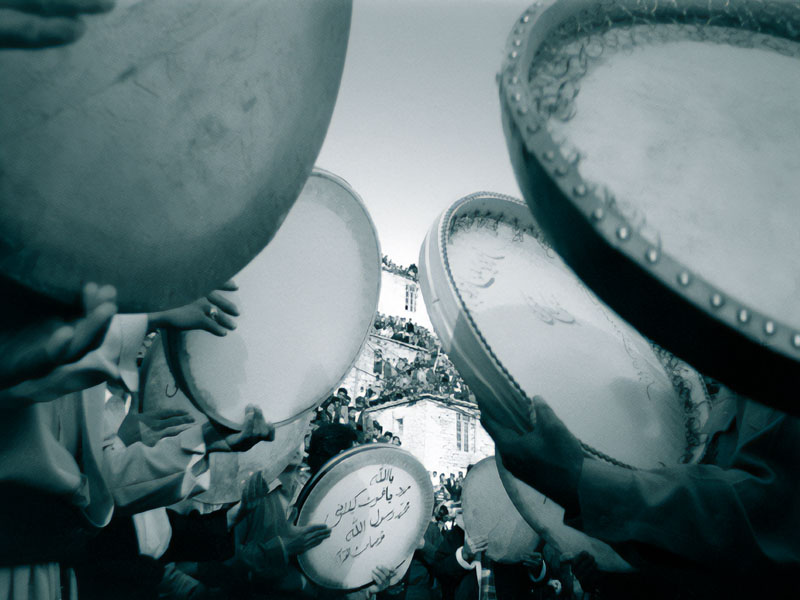Traditional Dance Of Hoobi
Issue 11

Baraka Boshaiba (Algeria)
Usually people differ in looking for the functions of these forms. Some believe that it is amusement; others believe it is a historical reality. Some people also think the function is rebuilding the self or the memory or any other means which could achieve the promotion of the society. Who could examine the traditional memory of the Algerian society in the Western South could easily feel the richness of the traditional performing arts. People in this area have applied these arts to express their worries and conditions. What is remarkably distinguished and characteristic for the population of Bashaar area, primarily for the tribe of Thawi Maneia’ is their strong and intimate relation with the environment and also the similarity of their language with classical Arabic language. The domain of their language is influenced by the flavour of the soul of the desert, primarily in oral poetry, its structure and content. Not only that but also in the similarity of images and the structure of the poems, for instance in the adoption of the prologue. However, the dance of the Hoobi is one of these performing arts which are a part of the network of man thinking as similar as other forms of expressions: oral literature, performing arts and rituals for instance. Certainly all these arts indicate the belief and epistemological bases which man had encountered as early as the dawn of history. Moreover, the dance is a sign for the Algerian identity. But, we should consider the fact that the dance is still primitive, and is still performed in the same way it was performed in the past. The aesthetic value of the dance is easily observed. Such a value comes to the audience through a network of signs. Who examines the dance could find roots in the remote past and its relation with Arabic heritage. The dance is similar to so many dances in several countries mainly in the relation of the dance with the rituals of wedding. It is difficult to explain why dance is called the Hoobi. Not only is that but the person who coined the name unknown. However, the word Hoobi is repeated during the performance of the dance. Moreover, the dance is performed communally, in a style of performance lacks any signs of submitting to the other’s power. The dance is a sign of the Algerian identity, but it is still performed in a primitive way. The dance has not yet developed or changed in any respect. Examining the dance, we could easily observe the aesthetic value of the performance. This value is a outcome of a network of signs. It is essential for anyone who studies these traditional performances to use that network as a reference for the culture of the society and its artistic identity expressed in the performance.



































































